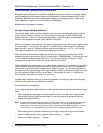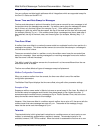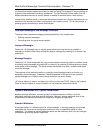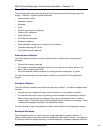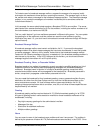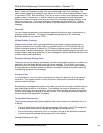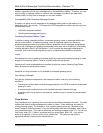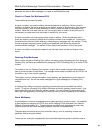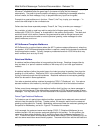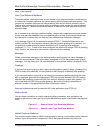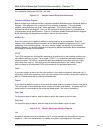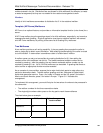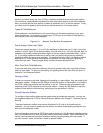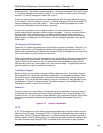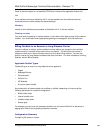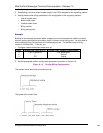
Mitel NuPoint Messenger Technical Documentation - Release 7.0
log in simply by pressing a button on the telephone and entering a passcode, when prompted by
the server. Immediately after the guest logs in, the server will play the first message
automatically. The guest is given the options of keeping or discarding the message; when the
choice is made, the next message, if any, is played without any input from the guest.
Prompts for a guest mailbox are in the form, “Press P, the 7 key, to play your message....” in
order to be most helpful to the uninitiated user.
Callers also hear these expanded prompts, “Press R, the 7 key, to review your message...”
As a variation, a hotel or motel may wish to assign the full-feature guest mailbox. This is a
mailbox with FCOS 2 (Full Guest) or its equivalent in the mailbox configuration. The desk clerk
would still check in this mailbox; however, the guest would be able to change the name and
passcode, and would also be able to record a personal greeting, make messages for other
guest’s mailboxes, and so on.
NP OnDemand Template Mailboxes
NP OnDemand is an optional feature where the AIP™ system creates mailboxes only when they
are needed. A NP OnDemand template mailbox is used as a model for the temporary mailboxes
that this application creates. Typically, temporary mailboxes have their LCOS limits set to very
small numbers (such as a day or two).
Rotational Mailbox
A rotational mailbox allows callers to hear greetings that change. Greetings change either by
time and date (in a “period” rotational mailbox) or with every call (in an index type rotational
mailbox).
A rotational mailbox of either the period type or the index type plays its greeting, then plays the
greeting of a child mailbox. Distribution list 01 in the rotational mailbox controls the rotating (or
cycling) of callers through the child mailboxes. Rotational mailboxes do not require greetings,
which can be useful in some applications.
You make a standard mailbox rotational by assigning FCOS 17 (Rotational) to it. You make a
standard mailbox a child mailbox by including it in the distribution list of the rotational mailbox.
Callers cannot leave messages in the rotational mailbox itself, but they can leave messages in
one of the child mailboxes, if the child mailbox is assigned an FCOS that allows callers to leave
messages. You may have up to 190 child mailboxes in the rotational mailbox’s distribution list 01.
Period-Type Rotational Mailboxes
To illustrate a use of a period-type rotational mailbox, suppose that a restaurant owner wants all
callers to hear the special of the day. Tuesday callers, for example, would hear the restaurant
greeting and the special for Tuesday; Wednesday callers would hear the restaurant greeting and
the special for Wednesday, and so on. Figure 6-7 illustrates this example.
In this example, the restaurant owner would assign FCOS 17 (Rotational Mailboxes) to one
mailbox (mailbox 100) and record a restaurant greeting for this mailbox. For this mailbox, the
owner would also create distribution list 01 containing seven child mailboxes (mailboxes 101-
107). To each of the seven child mailboxes the owner would assign FCOS 6 (Greeting Only); for
each the owner would also record the daily special. The owner would then set the start date and
©
Copyright 2002, Mitel Networks Corporation 99



